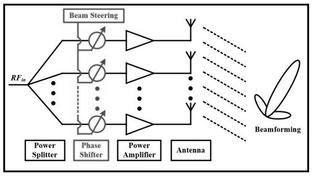Minimum Detectable Signal (MDS) vs. Spurious Free Dynamic Range (SFDR)
Advertisement
This page describes Minimum Detectable Signal (MDS) and Spurious Free Dynamic Range (SFDR), highlighting the differences between them.
Minimum Detectable Signal (MDS)
MDS is the signal power at the input that will generate/produce a Signal-to-Noise Ratio (Sout/Nout) equal to one. In simpler terms, it’s the weakest signal that can be reliably distinguished from the background noise.
The formula for Minimum Detectable Signal (MDS) is:
MDS = KT + 10 Log10 (BW) + Noise figure
Where:
- BW is the minimum bandwidth in the RF chain.
- KT represents the thermal noise floor, which is approximately -174 dBm/Hz.
For example, if the minimum bandwidth is 10 kHz and the cascaded noise figure is 15.1 dB, then:
Minimum detectable signal = -119 dBm
Spurious Free Dynamic Range (SFDR)
SFDR measures the ability of an RF receiver to operate effectively between the limits of noise and interference. It represents the range of signal powers that can be processed without being significantly affected by spurious signals (undesired signals generated within the receiver itself).
The following equation shows that SFDR depends directly on the bandwidth:
SFDR = 2(IIP3 - MDS) / 3
Where:
- IIP3 is the 3rd order Input Intercept Point.
- MDS is the Minimum Detectable Signal.
Difference between MDS and SFDR
While both MDS and SFDR are important metrics for receiver performance, they represent different aspects:
- MDS indicates the sensitivity of the receiver – how weak a signal it can detect.
- SFDR indicates the linearity and dynamic range of the receiver – how well it can handle a range of signal strengths without introducing significant distortion.
In essence, MDS tells you the floor of detectable signals, and SFDR tells you the range above that floor where signals can be reliably processed.
Advertisement
 RF
RF








